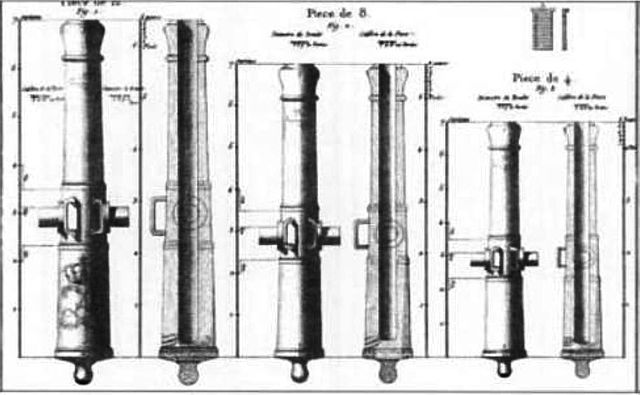The Gribeauval system was an artillery system introduced by Lieutenant General Jean Baptiste Vaquette de Gribeauval during the 18th century. This system revolutionized French cannons, with a new production system that allowed lighter, more uniform guns without sacrificing range. The Gribeauval system superseded the Vallière system beginning in 1765. The new guns contributed to French military victories during the French Revolutionary Wars and Napoleonic Wars. The system included improvements to cannons, howitzers, and mortars. The Year XI system partly replaced the field guns in 1803 and the Valée system completely superseded the Gribeauval system in 1829.
Gribeauval system field artillery gun barrels are shown. From left to right, they are 12-, 8-, and 4-pounders.
Gribeauval
A 4-pounder Gribeauval cannon is sited in Battery 5 at Chalmette National Battlefield in New Orleans, La.
An 8-pounder Gribeauval cannon is sited in Battery 6 at Chalmette National Battlefield in New Orleans, La.
Jean-Baptiste Vaquette de Gribeauval
Lieutenant General Jean-Baptiste Vaquette de Gribeauval was a French artillery officer and engineer who revolutionised the French cannon, creating a new production system that allowed for lighter, more uniform guns without sacrificing range.
His Gribeauval system superseded the de Vallière system. These guns proved essential to French military victories during the Napoleonic Wars. Gribeauval is credited as the earliest known advocate for the interchangeability of gun parts. He is thus one of the principal influences on the later development of interchangeable manufacture.
Jean-Baptiste Vaquette de Gribeauval
Part of the Gribeauval system: cannons of 12-, 8-, and 4-pounders
Canon de 12 Gribeauval, An 2 de la Republique (1793–1794)






